Garment exhibition explores silk culture in Eurasia
Writer: Cao Zhen | Editor: Lin Qiuying | From: Original | Updated: 2024-10-14
The “Cocoon of Traditions — Silk in the National Cultures of Eurasia” exhibition at Nanshan Museum provides visitors with a rare opportunity to admire a wide range of stunning silk garments and other traditional attire from across Eurasia.
Featuring 283 factory-produced and artisanal silk objects from the 19th to the early 20th century, sourced from the Russian Museum of Ethnography, the exhibition showcases the diversity and profound heritage of silk cultures
throughout Eurasia.
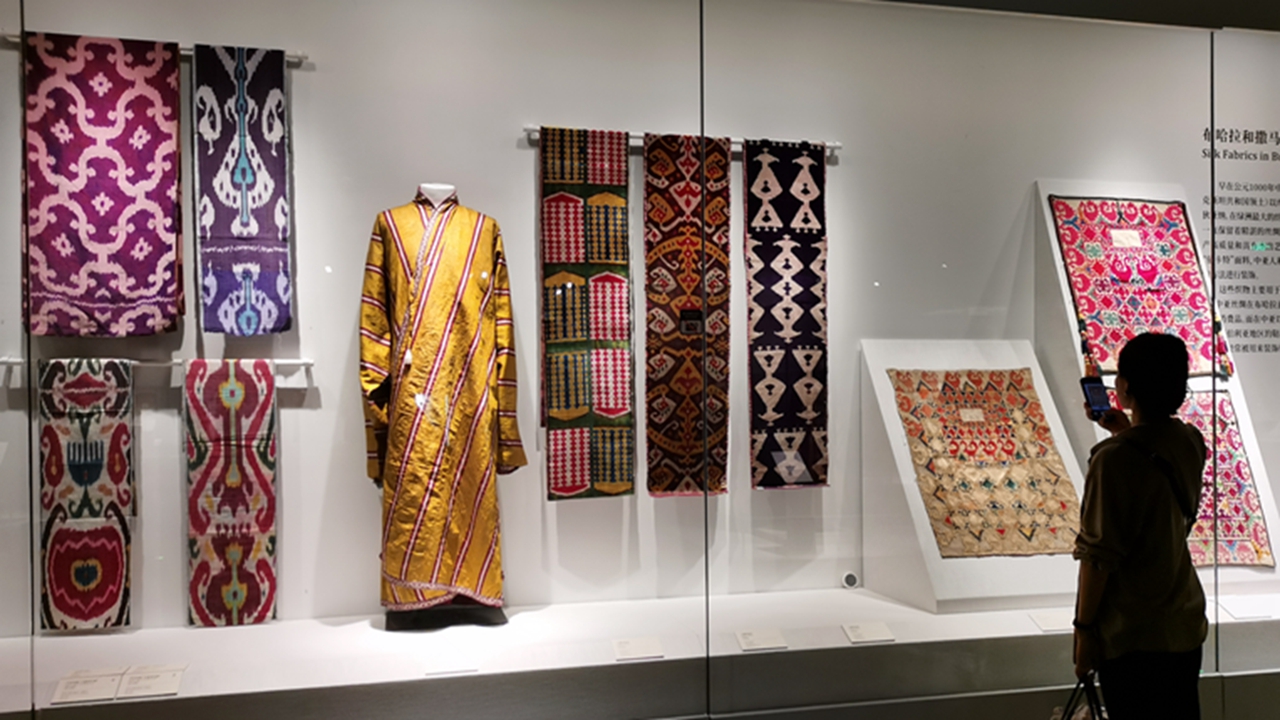 A visitor takes photos at the "Cocoon of Traditions — Silk in the National Cultures of Eurasia" exhibition at Nanshan Museum. Photos by Cao Zhen
A visitor takes photos at the "Cocoon of Traditions — Silk in the National Cultures of Eurasia" exhibition at Nanshan Museum. Photos by Cao Zhen
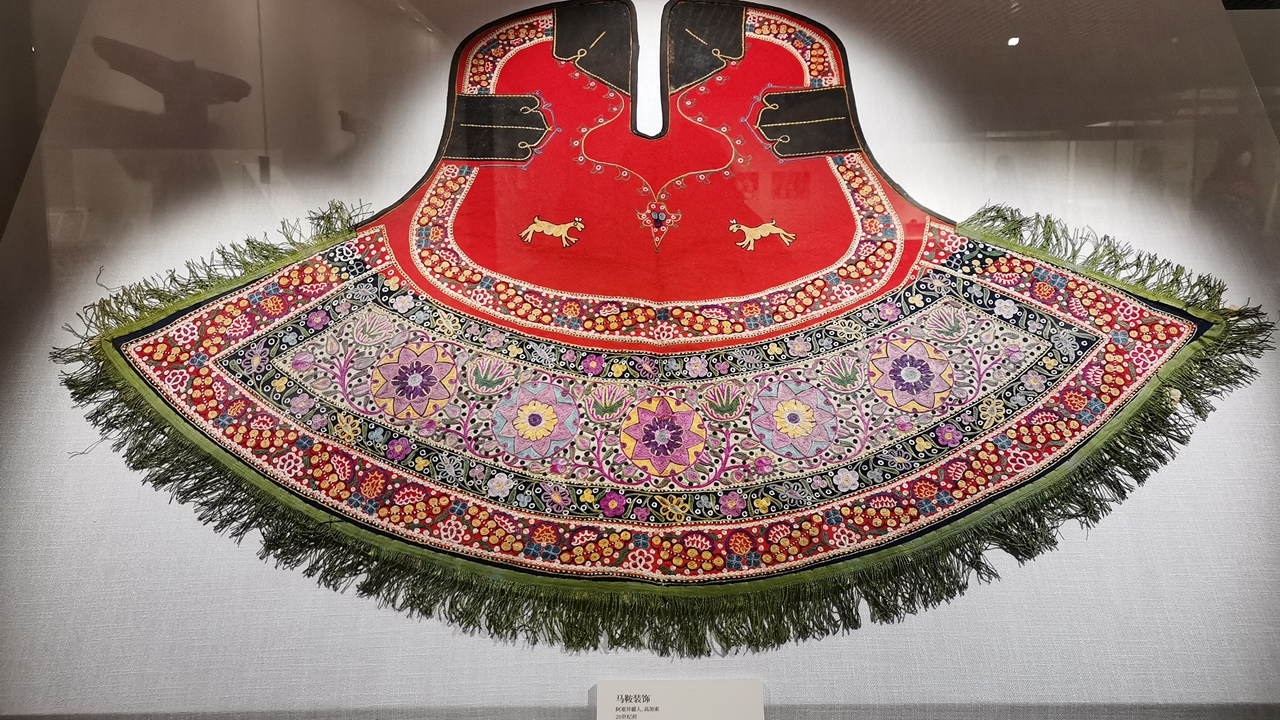
A 20th-century saddle cover from the Caucasus.
Notable exhibits include silk robes from China, intricate handcrafted fabrics from Central Asia, luxurious and colorful carpets from Iran, kelaghayi headscarves from southeast Caucasus, and elegant accessories of Russian silk garments. Each piece, with exquisite craftsmanship and unique aesthetics, carries significant historical and cultural value. The exhibition emphasizes silk as a symbol of the distinct local cultures within the major historical and ethnographic regions of Eurasia.
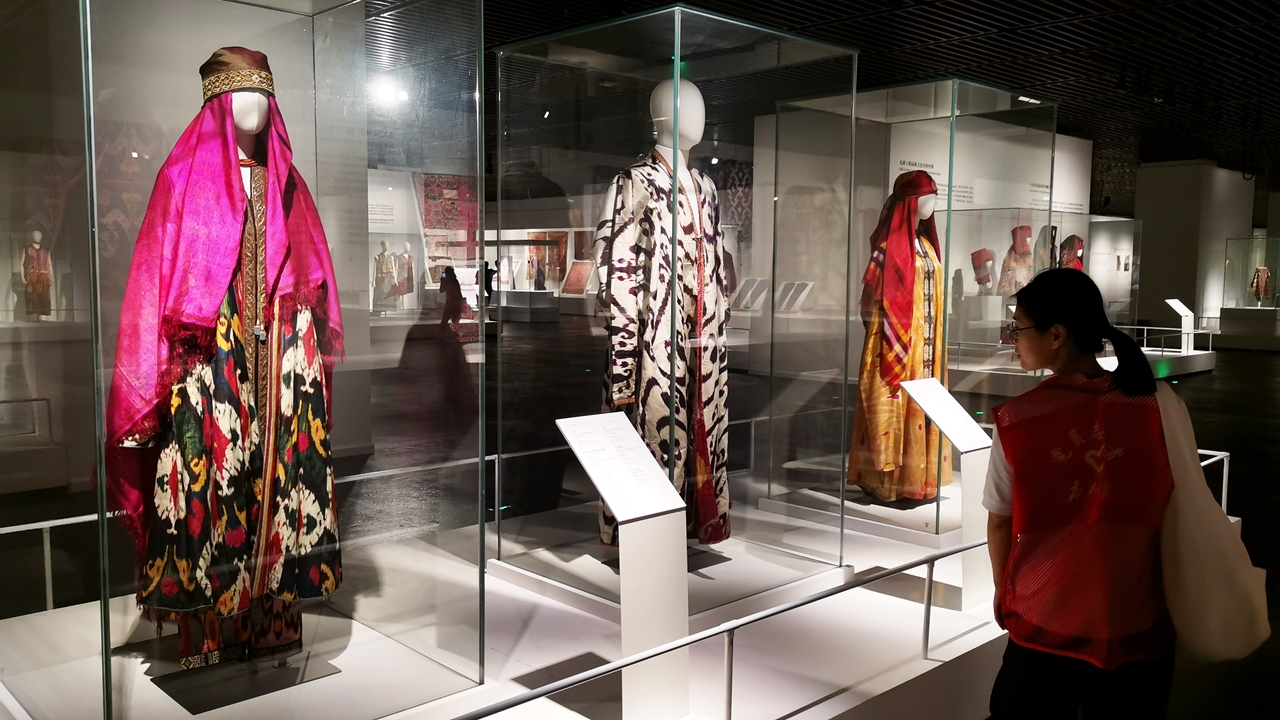
A visitor admires attire from Uzbekistan.
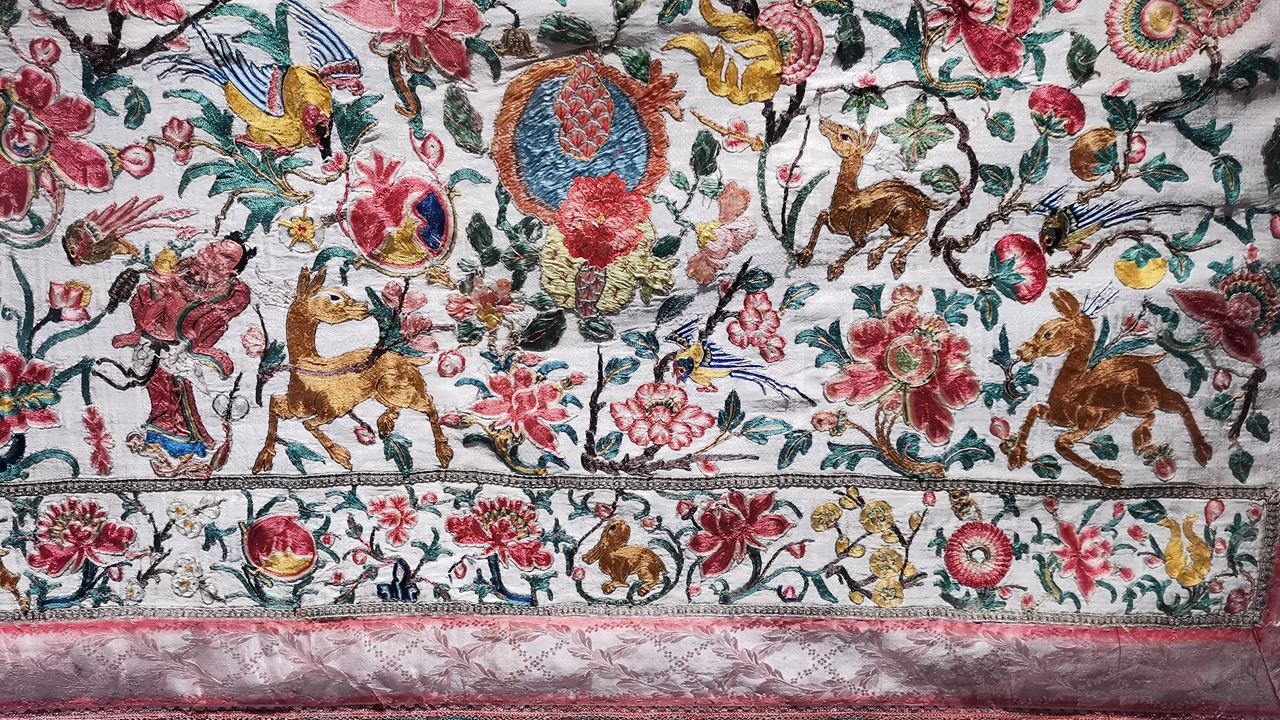
Part of an 18th-century bed skirt from Russia.
Detailed descriptions throughout the exhibition provides visitors with a comprehensive understanding of the originality of silk attire in each region, illustrating show neighboring countries have developed their distinct practices in utilizing silk fabrics, creating a unique “cocoon of tradition.” Despite these individual preferences, the integration and innovation found in their silk creations form a unique tapestry of cultural expression.
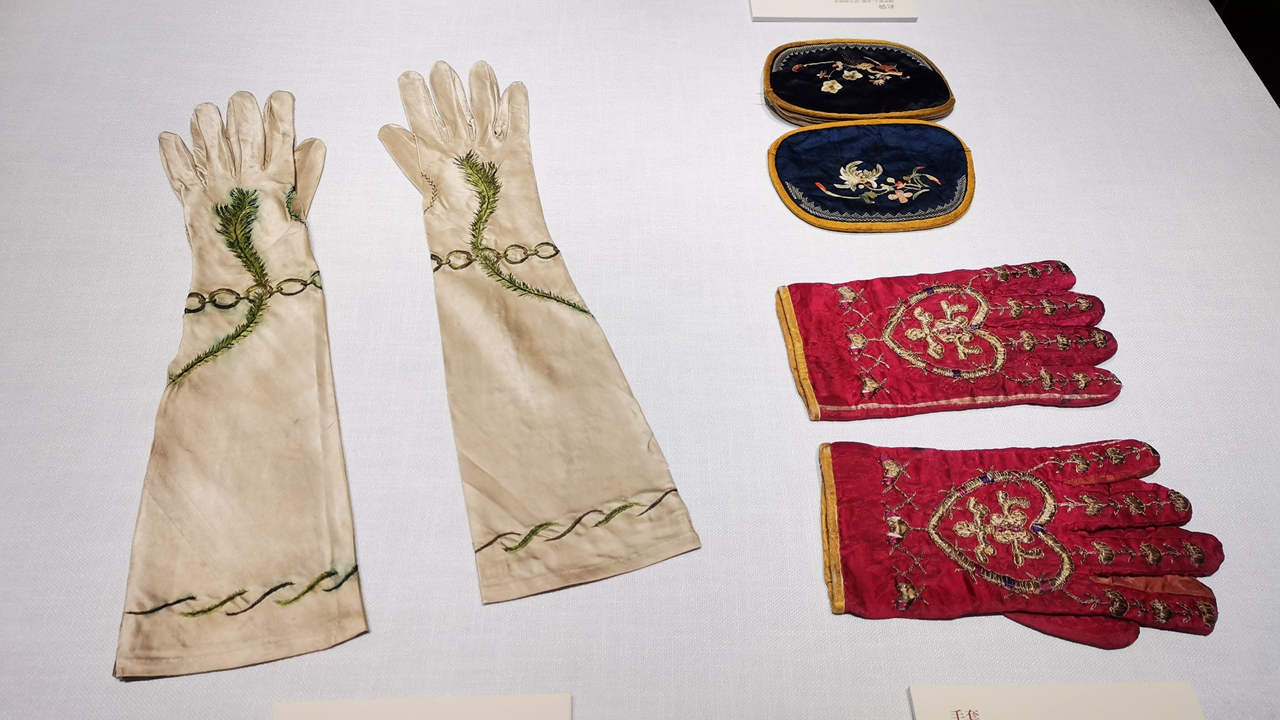
Gloves and pockets from Russia from the 19th century.
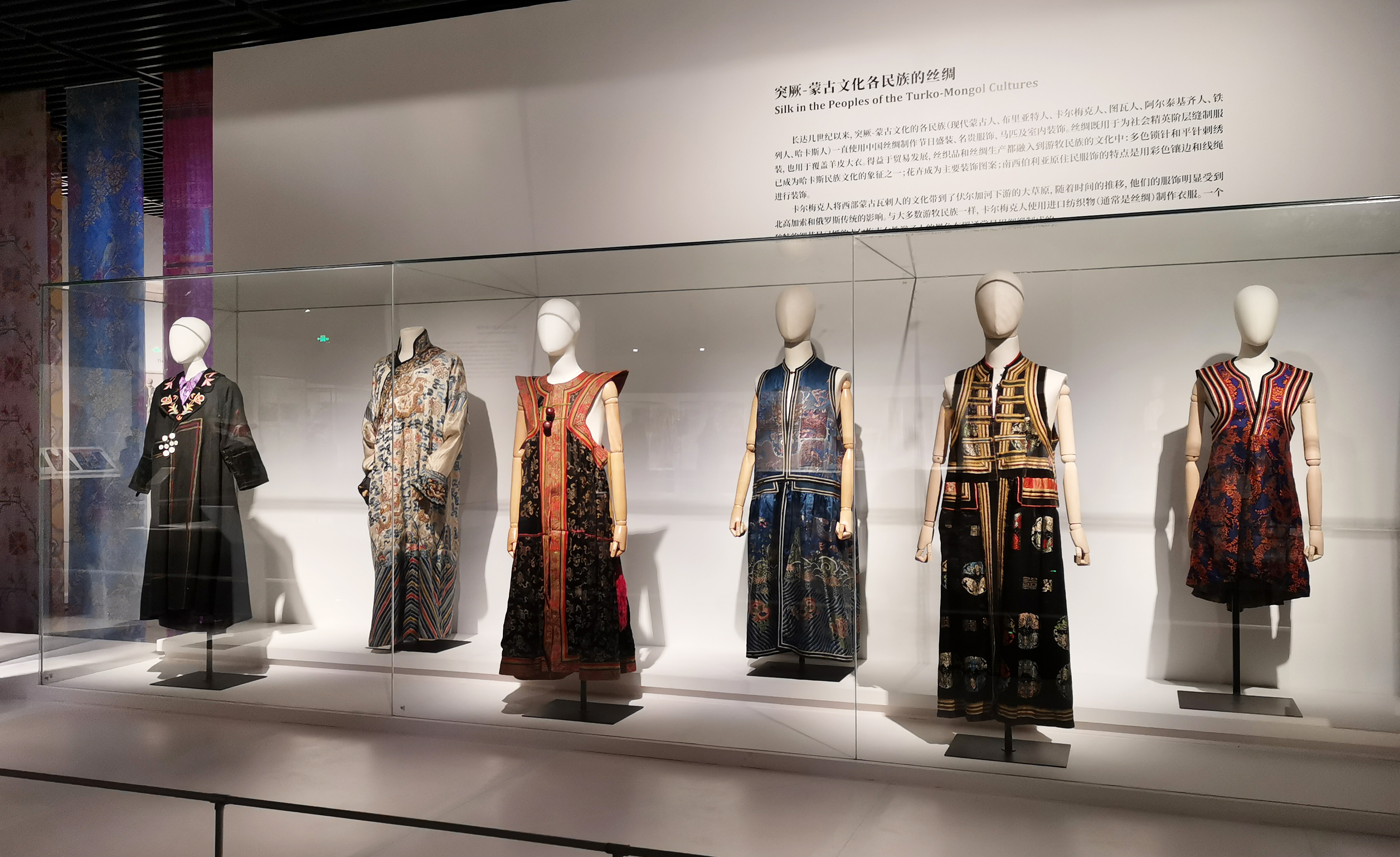
Attire from Russia and Mongolia.
As one of China’s most important inventions, silk spread rapidly throughout Eurasia, leading to the establishment of numerous sericulture centers. Over time, silk has come to be regarded as one of the most valuable and prestigious materials in human history. This unique fabric not only symbolizes the wealth and social status of its owners, but also facilitated cultural exchanges among the regions along the ancient Silk Road.
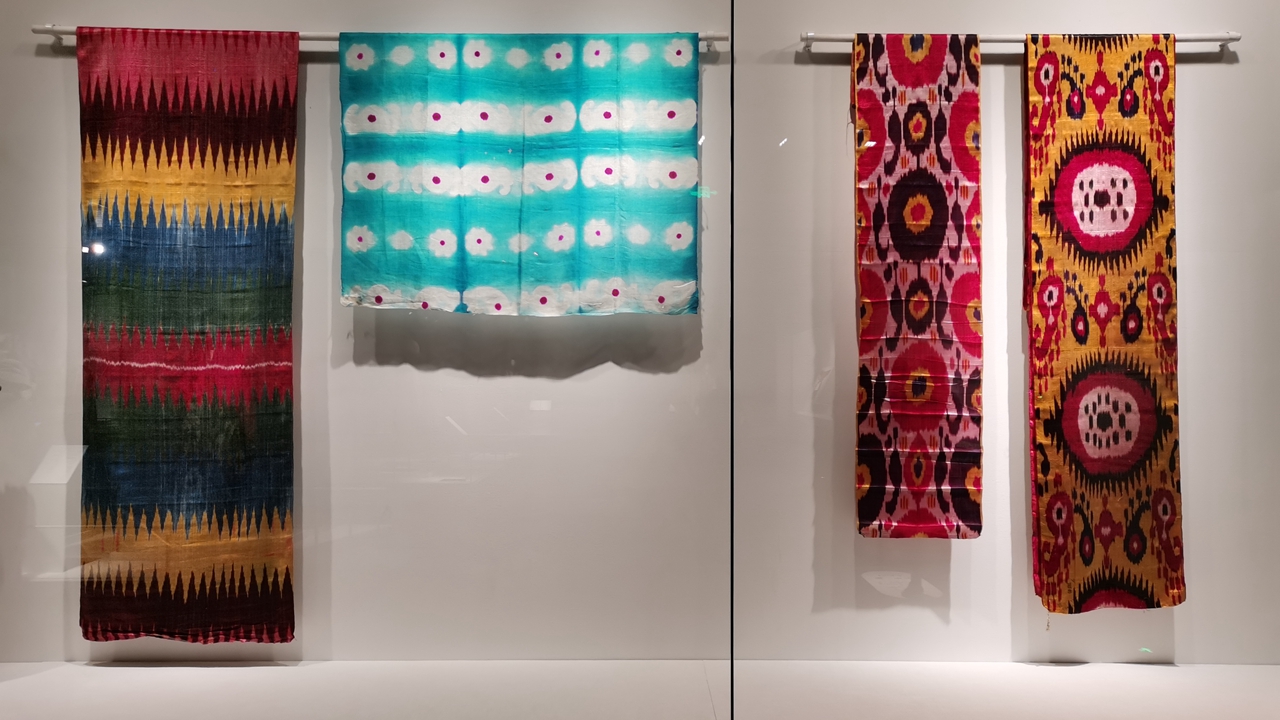
Silk fabrics from Uzbekistan.
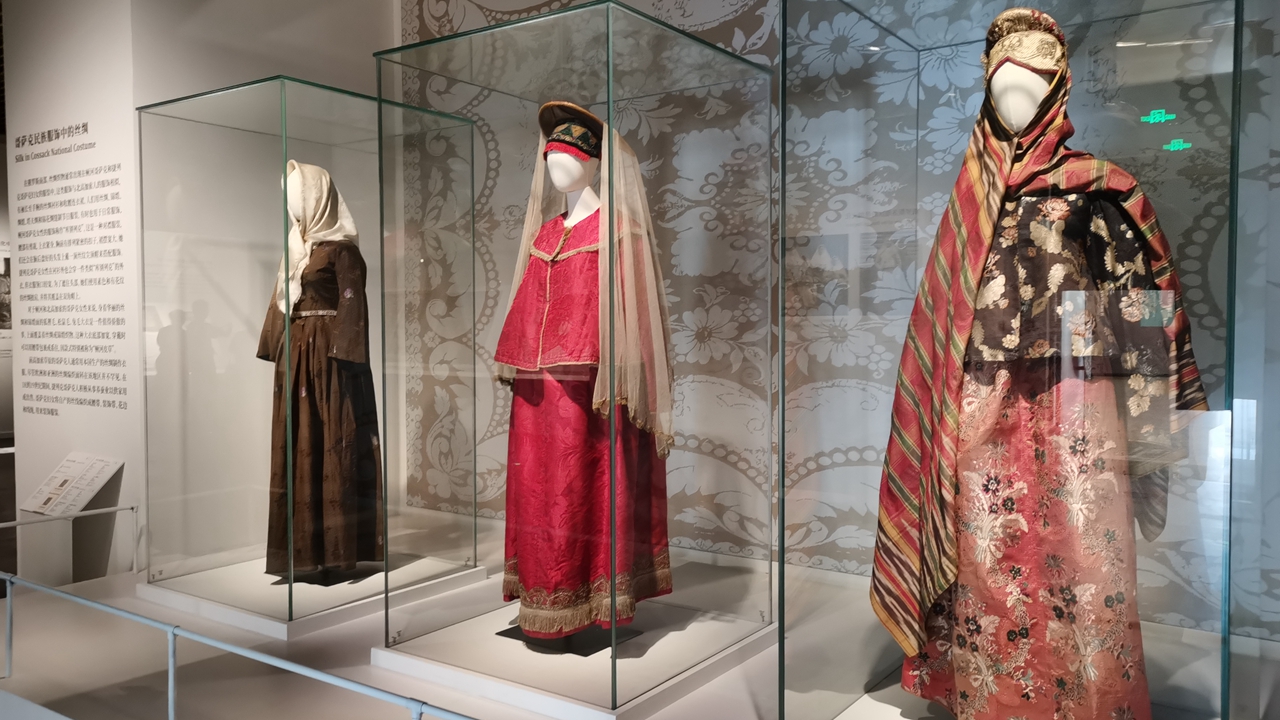
Festive costumes from Russia and Eastern Europe.
During the exhibition, a series of events have been held to give visitors an in-depth and comprehensive view of traditional garment art, the Silk Road, and silk art. These events included a lecture by the exhibition curator Lusine Ghushchian in August, a painting event in September, and a Russian song and dance gala performed by teachers and students from Shenzhen MSU-BIT University on Oct. 13.
Dates: Through Nov. 10
Hours: 10 a.m.-6 p.m. (Tue.-Fri. and Sundays), 10 a.m.-9 p.m. (Saturdays)
Entry: free, no reservations
Venue: Nanshan Museum, Nanshan District (南山区南山博物馆)
Metro: Line 1 or 12 to Taoyuan Station (桃园站), Exit B